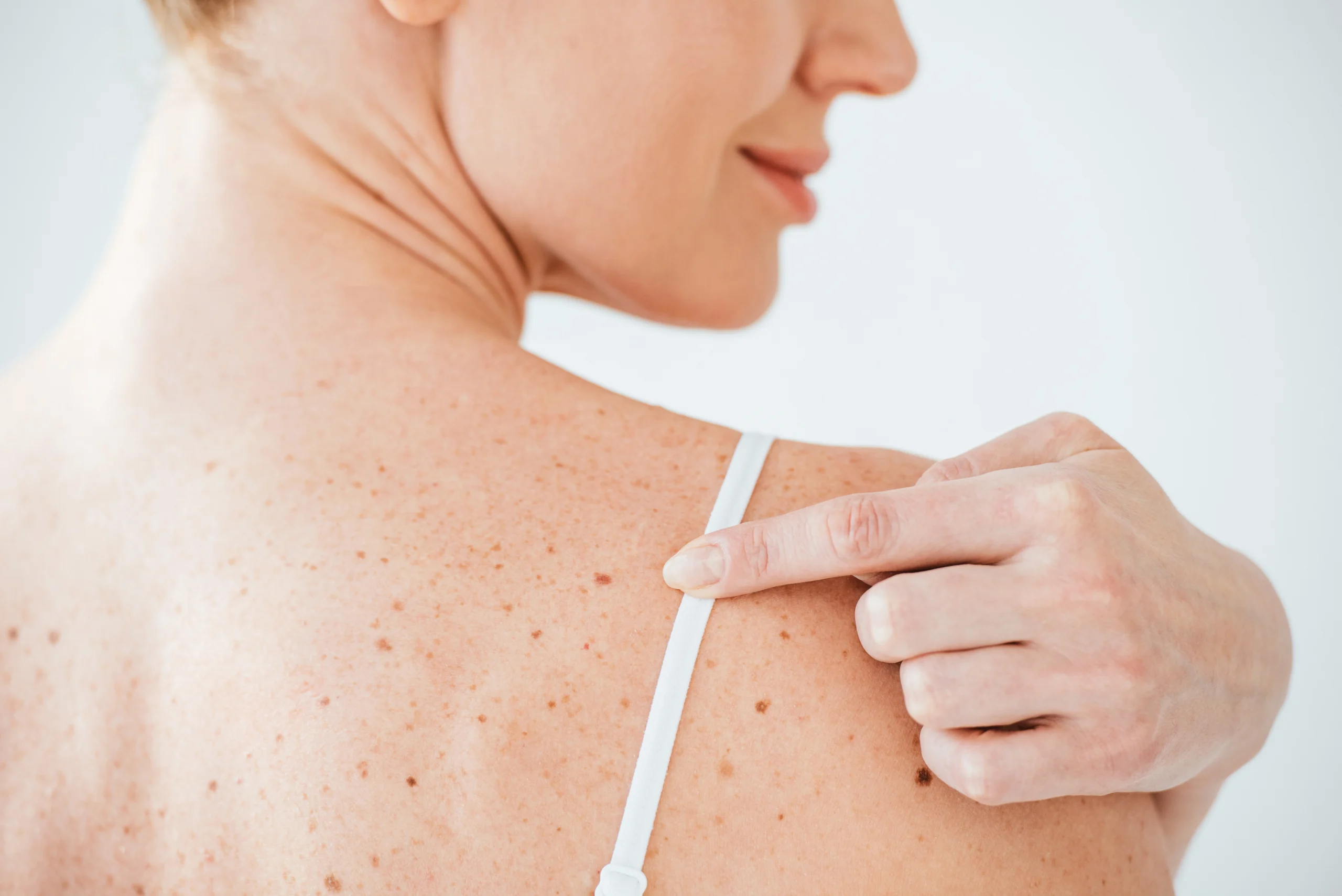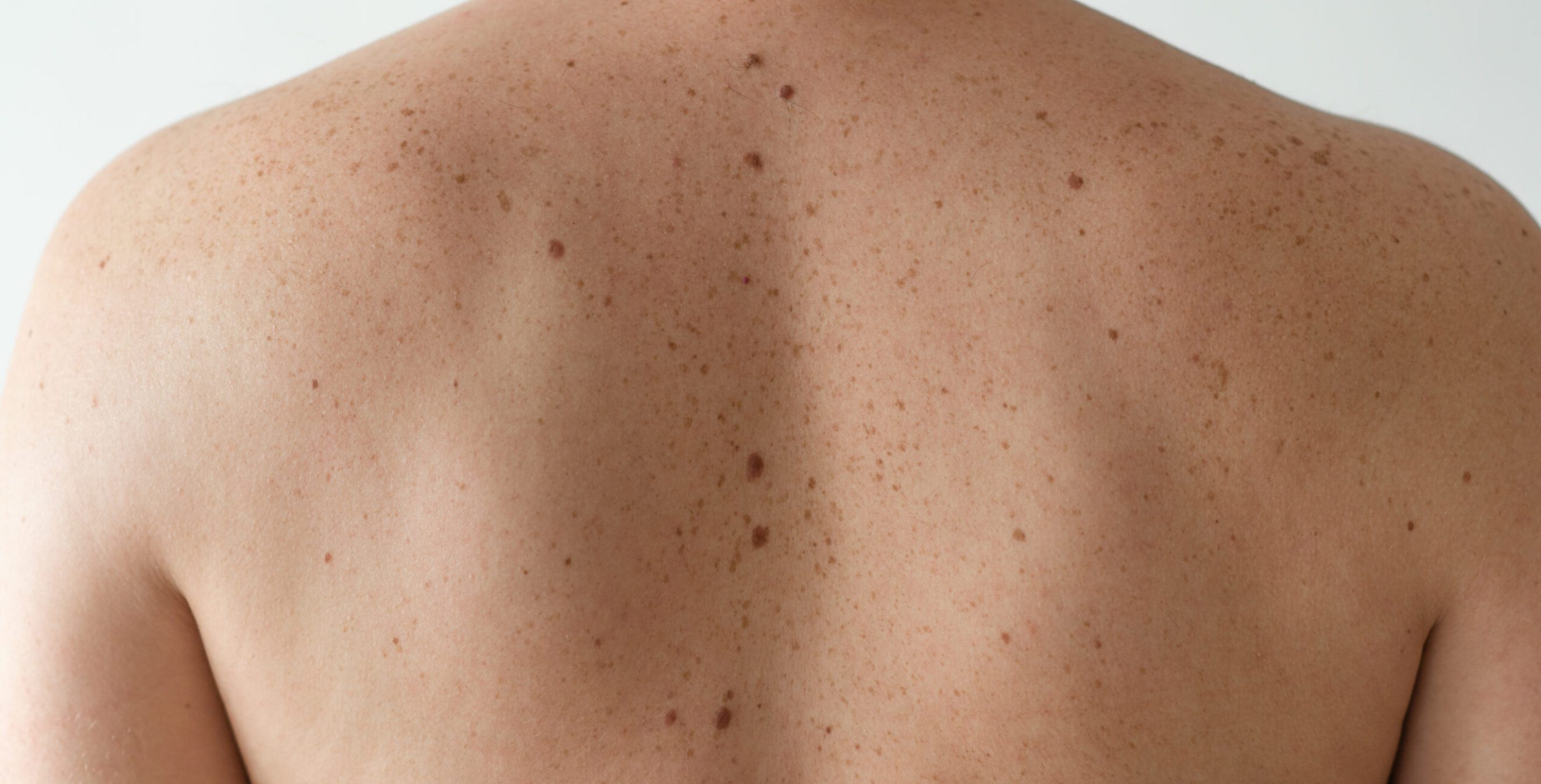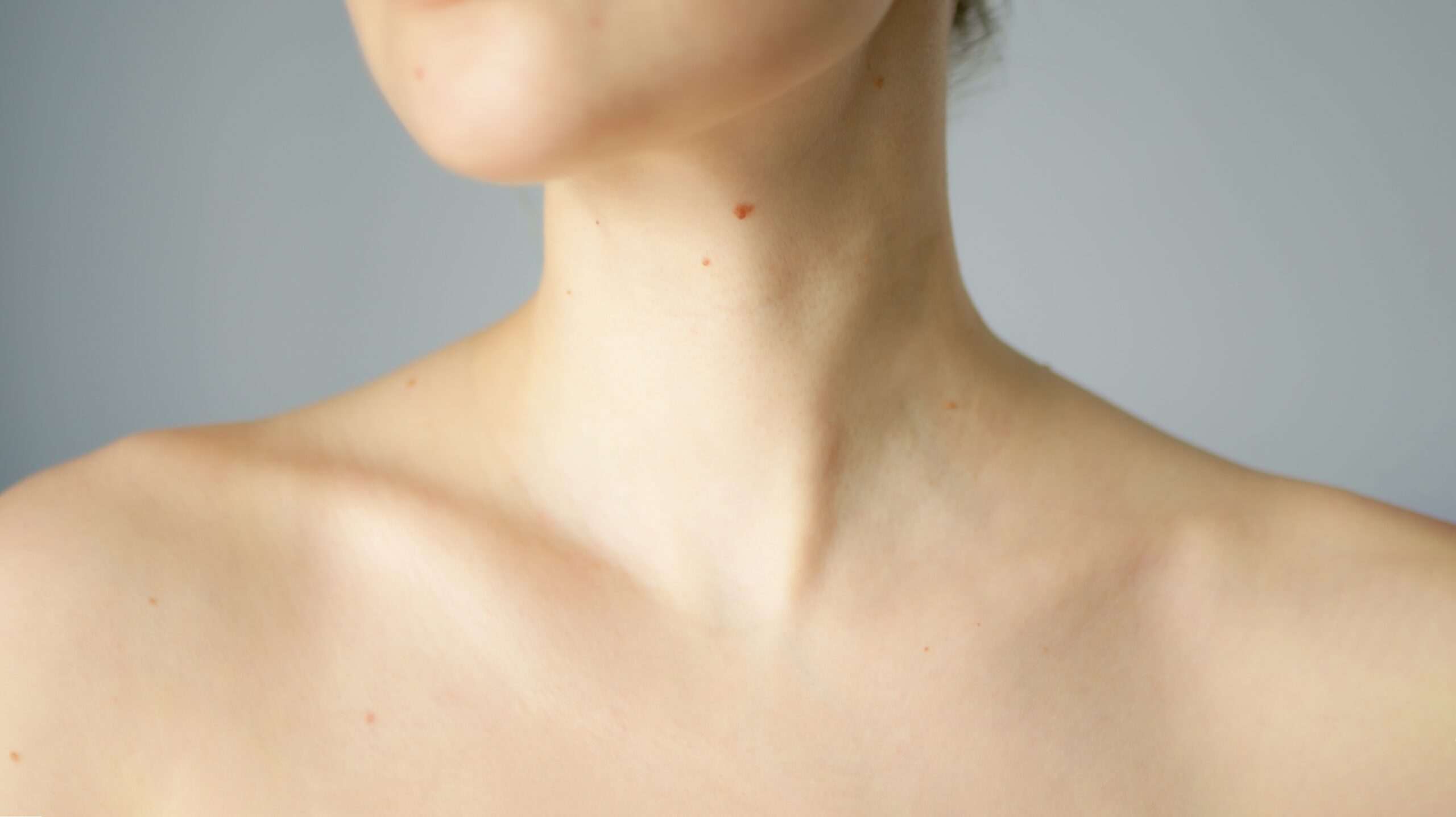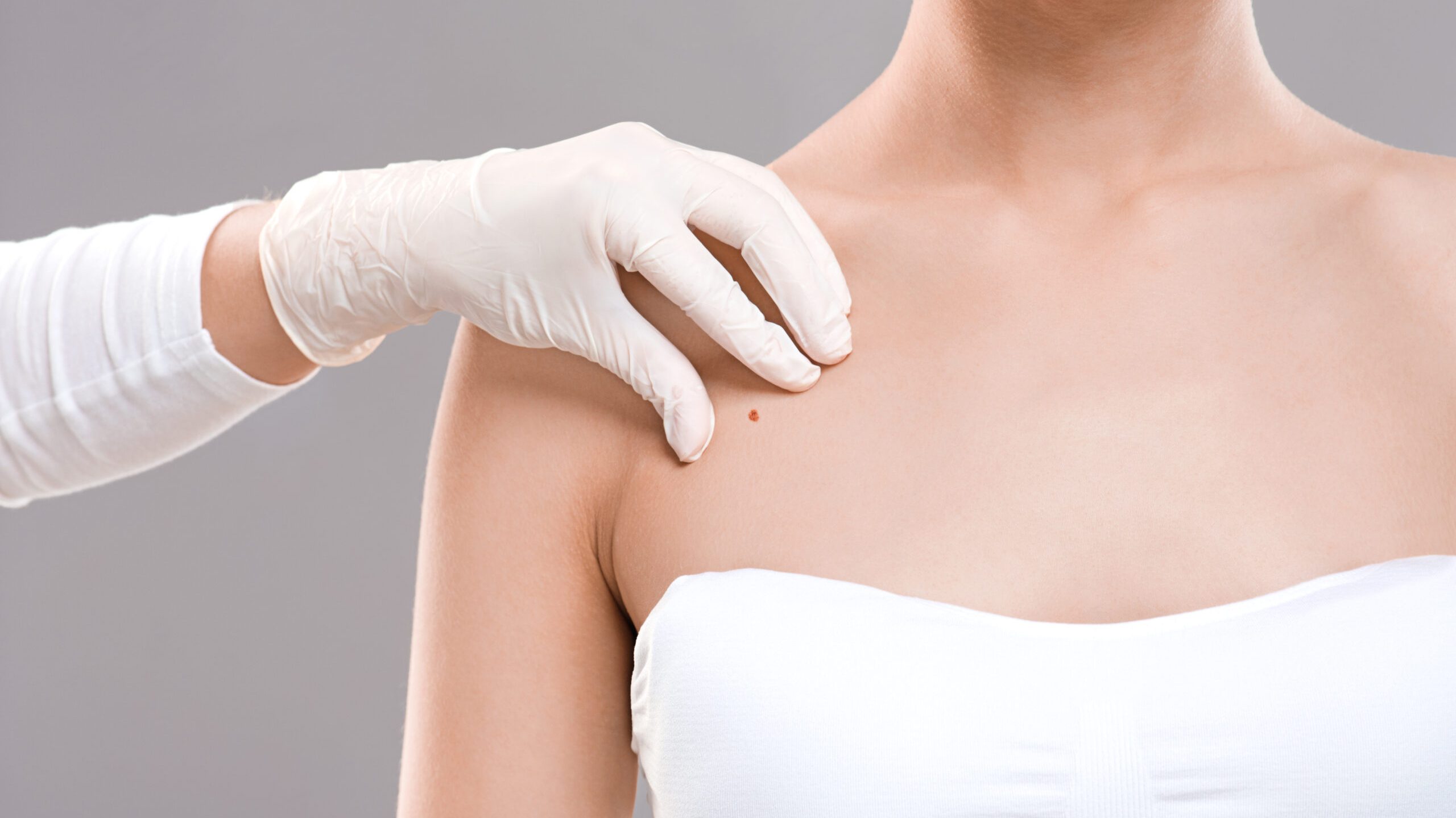Surgical Treatments
Mole Removal
Moles are skin growths, usually brown in colour, that can occur anywhere on the body. Moles can change in shape or colour over time, and in some cases may turn into skin cancer. Mole removal is a surgical dermatology treatment typically used for cosmetic purposes, to remove skin cancer, and in some cases to prevent skin cancer from forming.
Our Double Board-Certified Dermatologist has extensive knowledge in the diagnosis of moles and growths. Her expertise and precision allow her to remove these lesions effectively, with minimal scarring.
Surgical Treatments
Our Surgical Dermatology Treatments
Mole Removal
Surgical Mole Removal
Mole removal refers to the process of removing moles, which are small, pigmented spots or growths on the skin. Moles are generally harmless, but they can sometimes be aesthetically displeasing or cause discomfort if they are irritated or located in areas prone to friction. Additionally, in certain cases, moles may exhibit changes in size, shape, color, or texture, which could indicate a potential risk of skin cancer. There are several methods of mole removal, depending on factors such as the type of mole, its location, and the individual’s preferences.
Accurate diagnosis
Surgical removal allows the mole to be examined under a microscope, providing a more accurate diagnosis of whether the mole is benign (non-cancerous) or potentially cancerous (ex melanoma).
Complete removal
Surgical mole removal involves cutting out the entire mole, including the deeper layers of skin where the mole originates. This ensures that the entire mole is removed, minimizing the chances of recurrence.
Cosmetic results
Surgical mole removal often results in a more favorable cosmetic outcome compared to other methods. Surgical removals minimize scarring and optimizing the cosmetic appearance of the treated area.
Peace of mind
Removing a mole surgically can help provide peace of mind for individuals who are concerned about the overall appearance, potential health risks, or changing characteristics and recurrence of the mole.
Mole Removal Safety
How to safely remove a mole
The first step of a successful mole removal is the correct diagnosis of the mole or growth. There are many dermatological lesions that can present themselves as raised lesions on the skin, both benign and malignant. Only a Double Board-Certified Dermatologist is fit to correctly diagnose these lesions to ensure proper steps are taken in removing them.
Surgical procedures available:
A circular punch is placed on the circumference of the mole, allowing for removal with the smallest possible diameter. Typically this removes the roots of the mole.
Raised lesions can be shaved flush with the skin, and then treated with electrocautery. This burns the base of the mole to lower the risk of recurrence.
This procedure is normally performed for lesions larger than 8mm in diameter. Patients will require stitches which are usually removed after 1-2 weeks depending on the site.
Cryotherapy can be used to treat some benign lesions such as age spots. Only a Dermatologist will be able to tell you if the lesion of concern is an age spot that can be safely treated with cryotherapy or if it is mole that must be excised. Cryotherapy uses liquid nitrogen to generate extremely cold temperatures (-196°C) to destroy cells.
Electrocautery involves an electric metal scalpel that emanates heat. These high temperatures will destroy the cells where the lesion is located. This must be done by your Dermatologist, as temperatures must be carefully controlled to avoid scarring.e spot that can be safely treated with cryotherapy or if it is mole that must be excised. Cryotherapy uses liquid nitrogen to generate extremely cold temperatures (-196°C) to destroy cells.
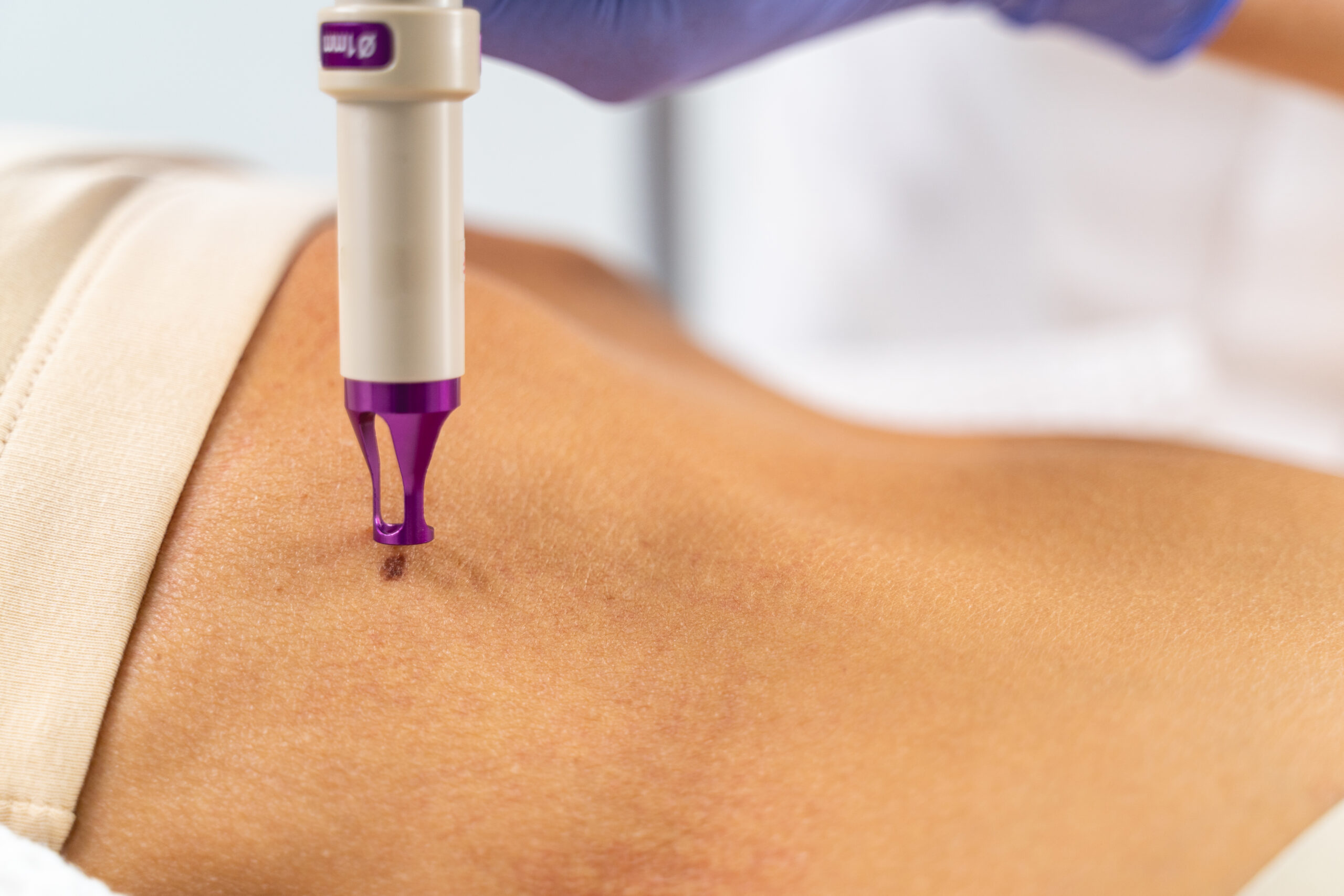
View Available Treatments
Mole Removal Treatment Experience
What to expect during a mole removal procedure
Before the procedure. Dr. Bailey will evaluate your skin, measure the area, ask about your medical history, and inform you about the most appropriate procedure for your case.
During the procedure. the lesion will be injected with local anesthetic. After the anesthetic takes effect, patients will feel no pain or discomfort. These procedures typically take 15-20 minutes depending on the size of the growth.
After the procedure avoid sun exposure and continue to follow post-surgical instructions given by Dr. Bailey. Avoid strenuous exercise for 24 hours following the procedure to prevent bleeding.
The recovery time varies depending on the size and location of the mole, as well as the individual’s healing ability. It is normal to experience some swelling, bruising, and mild discomfort around the treated area
Your expert Dermatologist
Meet Our Double Board-Certified Dermatologist
Our Dermatologist
A life dedicated to Dermatology and skin care
Dr. Kristy Bailey is a Double Board-Certified Dermatologist and Medical Director and Founder of FCP Dermatology. She has a wealth of knowledge and expertise in Medical, Surgical, and Cosmetic Dermatology and is recognized as an expert in cosmetic injectables and minimally invasive procedures.
Her vision was for a world-class facility where patients can feel safe, comfortable, and pampered. A little oasis in the busy financial district, where everyone leaves looking more rested and youthful.

Dr. Kristy Bailey
MD, FRCPC, DABD
Dermatology Treatments
We offer a wide range of Dermatology treatments
We offer over 40 different dermatology and skin care treatments including; Botox, filler, facials, peels, body rejuvenation, face lifts, brow lifts, mole removal, wart removal, laser hair removal, dermal fillers, skin boosters, Radiesse filler, Sculptra, Belkyra Deoxycholic Acid, PRP treatment, botox for hyperhidrosis, Sclerotherapy for spider veins, hydrafacials, medical microneedling, carbon peels, vampire facials, green peels, skin tightening, melasma treatments, hyperpigmentation treatments, skin resurfacing and much more.
Specialists in Mole Removal Treatments
FCP Dermatology is your Toronto Dermatology Clinic! Learn more about our Mole Removal treatments by contacting us!
All treatments are overseen by our Dermatologist
There are hundreds of nerves and arteries in your face and only a Board-Certified Dermatologist should be trusted to inject it.
At FCP Dermatology, all of our injections are performed by our Double-Board Certified Dermatologist Dr. Kristy Bailey, MD, FRCPC, DABD.
RELATED TREATMENTS
Moles or growths are typically removed in one session unless a re-excision is required.
Once the mole is removed, the skin will be in a phase of recovery. Patients are advised to follow the proper aftercare to ensure the wound heals properly and avoid any scarring or pigmentation.
- Keep the surgical area clean and dry for 24 hours.
- Resume normal showers in 24 hours. Wash with soap and water, and pat dry.
- Apply Vaseline daily to the area after showering and cover with a band-aid for 2 weeks.
- To reduce scarring, apply Skin Medica Scar Recovery gel twice daily once healed. This can be purchased in-clinic.
- Once healed, apply sunscreen to the area daily.
- If any bleeding occurs after the procedure, apply continuous firm pressure to the area with clean gauze for 20 minutes.
The biggest risk after surgery is infection of the surgical site. If you carefully follow the post-surgical instructions, it is very rare for this to happen.
Mole removal procedures are typically performed by dermatologists or plastic surgeons who have expertise in skin conditions and surgical techniques. This procedure is performed by our Double Board-Certified Dermatologist, Dr. Kristy Bailey.
Generally, lesion removals for a cosmetic purpose are not covered by OHIP or private insurance. If the lesion is cancerous, OHIP will cover the procedure.
Many of these adverse reactions are transient and self-limited. You will be advised on how to treat them.
- Surgical site infection.
- Mole recurrence.
- Erythema (skin redness).
- Local pain.
- Inflammation.
- Slight local bleeding.
In certain cases where patients are seeking to have a mole removed for cosmetic purposes, they may be trading the mole for a scar where the lesion is surgically removed. You will be advised on the best course of action by our Dermatologist.
- Always watch for any changes to the color, shape, size, or boarders of your mole.
- Avoid using home remedies or products without medical authorization.
- Use sunscreen daily.
- Monitor for any new moles that may appear.
A scar is the body's natural way of closing the skin and healing a wound.
If you follow all the post-surgical instructions, the wound will heal with the least visible scarring possible. It is always important to talk to your Dermatologist before any procedure, to assess the risk of a scar.
Moles should never be removed at home. Careful diagnosis by a Dermatologist is necessary before removing any lesion or growth on the body.
Common methods of mole removal include surgical excision, laser removal, shave excision, and cryotherapy (freezing the mole off with liquid nitrogen). The specific method used depends on factors such as the size, location, and type of mole.
The level of discomfort experienced during mole removal varies depending on the method used and individual pain tolerance. Local anesthesia is typically administered to numb the area before surgical excision or laser removal, minimizing any pain or discomfort.
Recovery after mole removal depends on the size and method of removal. In general, the treated area may require a few weeks to heal completely. Proper wound care, such as keeping the area clean and protected, is essential. Some scarring may occur, but it often fades over time.
The chances of a mole growing back after complete surgical excision are minimal. However, some mole cells may remain in the skin and cause a recurrence in rare cases. Regular skin examinations are recommended to monitor for any new or changing moles.
It is best to consult with a healthcare professional, such as a dermatologist, who can evaluate the mole and provide a diagnosis. They will consider factors such as size, shape, color, symmetry, and any changes in the mole to determine if removal is necessary.
